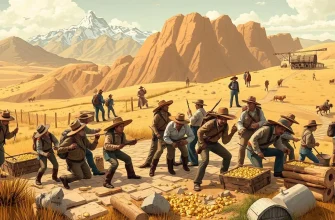The Great Depression was a defining period in history, marked by economic hardship, widespread poverty, and social upheaval. These films, set against this backdrop, offer a window into the lives of those who lived through these challenging times. They showcase not only the struggles but also the resilience, hope, and human spirit that defined the era. This curated selection of biopics provides a unique perspective on the Great Depression, making it an invaluable resource for history buffs, film enthusiasts, and anyone interested in understanding the human condition during one of the darkest economic periods.
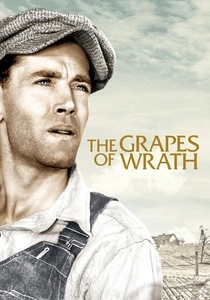
The Grapes of Wrath (1940)
Description: Based on John Steinbeck's novel, this film follows the Joad family as they migrate from Oklahoma to California in search of work during the Dust Bowl and Great Depression. It's a poignant depiction of the era's struggles.
Fact: John Ford, the director, insisted on using real migrant workers as extras to ensure authenticity. The film was nominated for seven Academy Awards, winning two.
 Watch Now
Watch Now 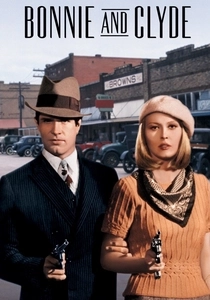
Bonnie and Clyde (1967)
Description: This film chronicles the lives of the infamous outlaws Bonnie Parker and Clyde Barrow, who became folk heroes during the Great Depression. It's a mix of romance, crime, and social commentary.
Fact: The film was controversial for its portrayal of violence and sexuality, leading to debates about the Hays Code and film censorship.
 Watch Now
Watch Now 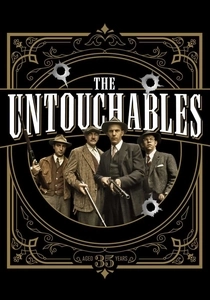
The Untouchables (1987)
Description: This film focuses on the efforts of Eliot Ness to bring down Al Capone during the Prohibition era, which overlapped with the Great Depression. It's a story of law enforcement versus organized crime.
Fact: The famous "Untouchables" team was actually much larger than depicted in the film, and Ness's real-life role was more administrative than hands-on.
 Watch Now
Watch Now 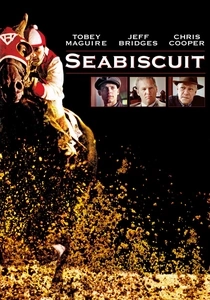
Seabiscuit (2003)
Description: This film captures the story of the racehorse Seabiscuit, who became a symbol of hope during the Great Depression. It's about an unlikely trio who find success and redemption through the horse.
Fact: The film used real racehorses, and the horse playing Seabiscuit was actually a descendant of the original Seabiscuit. The movie was nominated for seven Academy Awards.
 Watch Now
Watch Now 
The Aviator (2004)
Description: While not exclusively about the Great Depression, this biopic of Howard Hughes captures his rise to fame and fortune during the era, showcasing his eccentricities and contributions to aviation.
Fact: Leonardo DiCaprio gained 30 pounds for the role to portray Hughes's later years. The film was nominated for 11 Academy Awards, winning five.
 Watch Now
Watch Now 
Cinderella Man (2005)
Description: This film tells the true story of James J. Braddock, a boxer who rose from poverty during the Great Depression to become a symbol of hope for many Americans. It's a tale of perseverance and the American Dream.
Fact: Russell Crowe, who plays Braddock, trained for six months to get into the physical shape of a boxer. The film was shot in the same neighborhood where Braddock lived.
 Watch Now
Watch Now 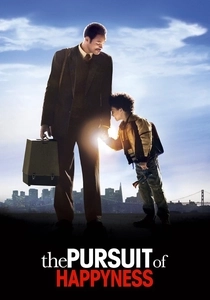
The Pursuit of Happyness (2006)
Description: Although set slightly after the Great Depression, this film captures the spirit of perseverance and hope, telling the story of Chris Gardner, who faced homelessness while pursuing a better life for his son.
Fact: Will Smith and his son Jaden played father and son in the film, mirroring their real-life relationship.
 Watch Now
Watch Now 
Public Enemies (2009)
Description: While not strictly a biopic, this film delves into the life of John Dillinger, a notorious bank robber during the Depression era. It explores the societal impact of his crimes and the law enforcement response.
Fact: The film was shot on location in many of the places where Dillinger's crimes took place, including the Little Bohemia Lodge in Wisconsin.
 Watch Now
Watch Now 
The Dust Bowl (2012)
Description: While not a traditional biopic, this Ken Burns documentary series tells the story of the Dust Bowl, an environmental disaster that exacerbated the Great Depression, through personal accounts and historical footage.
Fact: The series was praised for its comprehensive portrayal of the Dust Bowl, including interviews with survivors, making it a valuable historical document.
 Watch Now
Watch Now 
Hoover Dam (1941)
Description: This documentary-style film highlights the construction of the Hoover Dam, a monumental project that provided jobs and hope during the Great Depression.
Fact: The film was produced by the U.S. Bureau of Reclamation to showcase the engineering feat and the human effort behind the dam's construction.
 30 Days Free
30 Days Free 






